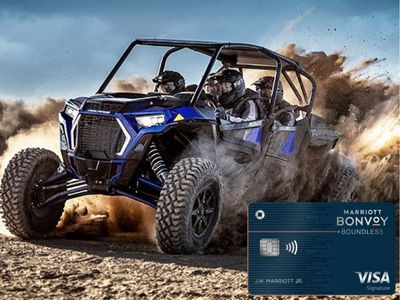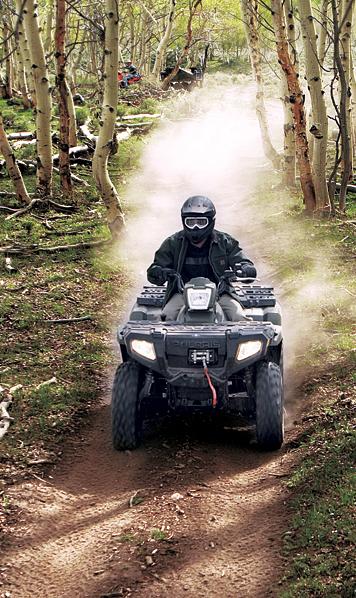If you’re looking to buy new ATV tires for your 4×4/utility ATV and you ride a lot of trails here are some things you should consider.
Terrain
What kind of trails are you riding on the most? Muddy, dry dirt, sandy, rocky, snow covered or do you encounter all types on a regular basis. Each tire in the way it’s designed and the material that it is made of can offer benefits and downfalls and it takes some consideration to determine which types suit your riding style.
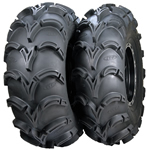 Muddy– Generally you’ll want to look for tread patterns that have large gaps or spacing between the treads. The large spacing allows for the mud to be spun out of the tread while the tire is in motion and so that when the tread of the tire reenters the mud, the mud that was previously in the tread was able to be thrown out. If the treads are too close together the mud will pack in the treads and the mud will never come off the tire during revolution, basically creating a tire that looks like a “mud slick”.
Muddy– Generally you’ll want to look for tread patterns that have large gaps or spacing between the treads. The large spacing allows for the mud to be spun out of the tread while the tire is in motion and so that when the tread of the tire reenters the mud, the mud that was previously in the tread was able to be thrown out. If the treads are too close together the mud will pack in the treads and the mud will never come off the tire during revolution, basically creating a tire that looks like a “mud slick”.
Now these theories that I’m about to mention are up for debate and I hope you’ll share your thoughts in the comments section. Skinny Tires vs. Fat Tires, some would argue that skinny tires are better because it allows the tires to dig to the bottom of the mud and find solid ground faster enabling the ATV to get traction. Others would say wider, fatter tires are best because it helps the quad stay on top of the mud and keeps the quad from bottoming out and they help displace more mud behind the ATV giving the quad less mud to push through. Like I stated in the beginning, make your case, and share your experience. If you like playing in the mud and don’t have a winch, check out the post on winches.
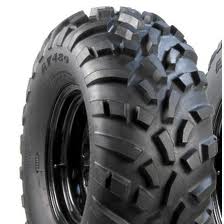 Dry Dirt– Now with trails that are dry most of time and big mud holes aren’t every 100 feet then the tire you want is just the opposite. Find ATV tires with lots of treads and lugs that are close together. More treads will offer more traction and a smoother ride.
Dry Dirt– Now with trails that are dry most of time and big mud holes aren’t every 100 feet then the tire you want is just the opposite. Find ATV tires with lots of treads and lugs that are close together. More treads will offer more traction and a smoother ride.
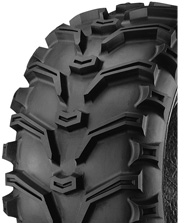 Sandy– Now you’ve probably seen those tires they have mounted on the back of a Yamaha Banshee that’s ripping through the dunes throwing 40ft rooster tails, the kind they call “sand tires” or “paddle tires”. Well those are for the dunes, we’re talking about trails like the ones you’ll find in the Francis Marion National Forest in Charleston, SC. Pick out a tire that offers a narrow sizing and a wide size and also features deep treads with a lot of spacing between treads. Note: Stock set ups already come with this sizing and you can use that as reference. Here’s the logic, mount narrow tires in the front to help you turn. The narrow design will allow the tires to cut into the sand and maneuver the front end. You’ll want wider tires in the back. Fatter tires in the back will keep the rear end from digging into the sand during acceleration and getting stuck. The large spacing between treads will give the treads a chance to dig into the sand and the deeper treads will act like a “paddle tire” and give you lots of traction.
Sandy– Now you’ve probably seen those tires they have mounted on the back of a Yamaha Banshee that’s ripping through the dunes throwing 40ft rooster tails, the kind they call “sand tires” or “paddle tires”. Well those are for the dunes, we’re talking about trails like the ones you’ll find in the Francis Marion National Forest in Charleston, SC. Pick out a tire that offers a narrow sizing and a wide size and also features deep treads with a lot of spacing between treads. Note: Stock set ups already come with this sizing and you can use that as reference. Here’s the logic, mount narrow tires in the front to help you turn. The narrow design will allow the tires to cut into the sand and maneuver the front end. You’ll want wider tires in the back. Fatter tires in the back will keep the rear end from digging into the sand during acceleration and getting stuck. The large spacing between treads will give the treads a chance to dig into the sand and the deeper treads will act like a “paddle tire” and give you lots of traction.
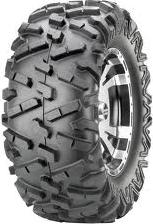 Rocky– I can’t preach this enough, if you’re riding trails that are littered with rocks or the trail is made from nothing but rocks. Make sure to find tires with at least 6ply or if your budget can fit it, go with 8ply tires. 8ply tires are becoming more common and there’s some great tires to choose from. It’s very easy to be riding a trail and hit a rock hard enough that the rock punctures the tire. At high speeds it’s common the side wall of the tire gets smashed between the rock and the rim of the wheel and causes a puncture. Having ATV tires with a thick construction will help prevent these types of punctures.
Rocky– I can’t preach this enough, if you’re riding trails that are littered with rocks or the trail is made from nothing but rocks. Make sure to find tires with at least 6ply or if your budget can fit it, go with 8ply tires. 8ply tires are becoming more common and there’s some great tires to choose from. It’s very easy to be riding a trail and hit a rock hard enough that the rock punctures the tire. At high speeds it’s common the side wall of the tire gets smashed between the rock and the rim of the wheel and causes a puncture. Having ATV tires with a thick construction will help prevent these types of punctures.
Also, look for a design that offers deep treads, margin-able distance between the treads, treads that run deep into the sidewall and with built in rim protection. Deep treads will give more distance between the body of the tire and the rocks that could puncture it. Don’t get a design that has a lot of spacing between treads like a mud tire because that gives rocks a chance to reach the body of the tire and you run the risk of punctures. But you don’t want to pick tires that have treads too close together, because there won’t be enough spacing for the treads to grapple the rocks during a slow crawl or going up the rocky face of a hill. So look for something with 2 inches of spacing so those deep lugs get a chance to grab onto the edge of the rock. Look for models where the treads run down the side of the tire deep into the sidewall. This will add some benefit to traction but most importantly add a lot of protection to the sidewall. And lastly, get tires with built-in rim protection. These tires are specially crafted to allow the rim of the wheel to sit safely deep into the bead so that the tire protects the edge of the rims from getting dented, scratched and cracked from the impact of rocks.
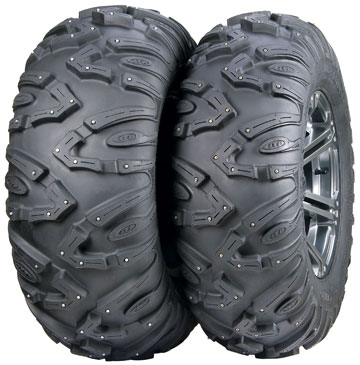 Snow– For the riders who find themselves on the trails using their ATV as a snowmobile, narrow tires all the way around will let the tires dig down through the snow and find some type of ground to grip to. Look for a design that has medium tread height and large spacing between treads. A tire with deep treads will just become packed with snow when the snow is wet, no matter the distance between treads. Tires with a medium tread height will offer a better chance for the snow to be thrown loose from the treads during revolutions. If ice becomes a major factor then naturally, studded tires or tire chains would play a roll. If you’re in need of a snow plow check out our post on snow plows for your ATV.
Snow– For the riders who find themselves on the trails using their ATV as a snowmobile, narrow tires all the way around will let the tires dig down through the snow and find some type of ground to grip to. Look for a design that has medium tread height and large spacing between treads. A tire with deep treads will just become packed with snow when the snow is wet, no matter the distance between treads. Tires with a medium tread height will offer a better chance for the snow to be thrown loose from the treads during revolutions. If ice becomes a major factor then naturally, studded tires or tire chains would play a roll. If you’re in need of a snow plow check out our post on snow plows for your ATV.
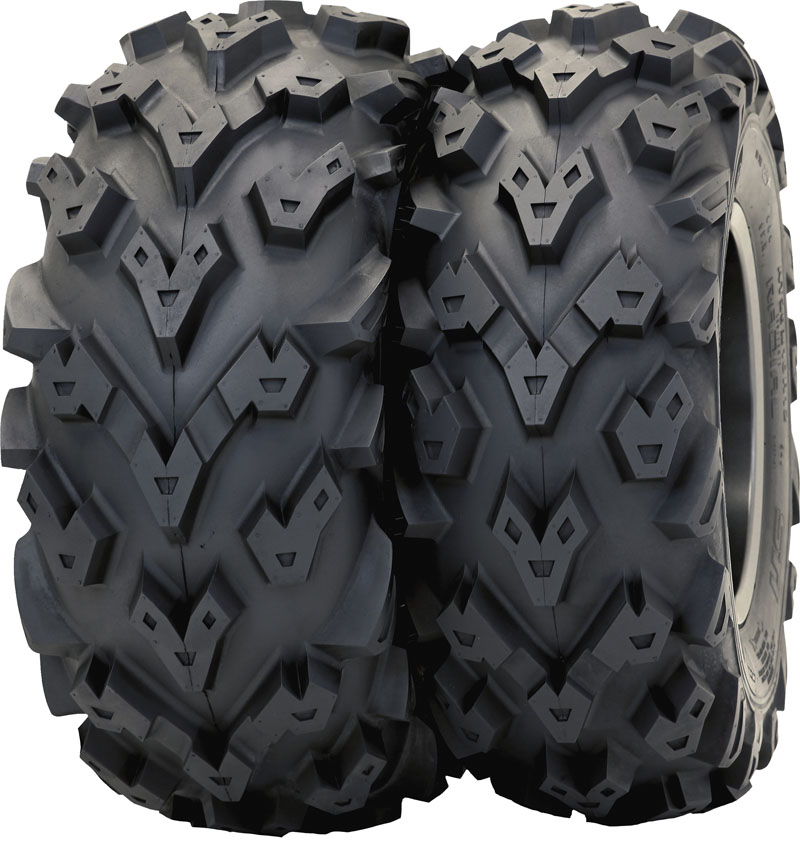 All around riding– I suggest a design that offers medium to deep treads, medium tread spacing, 2-3 inch spacing will offer smoother riding on hard pact surfaces. A 6ply construction with rim protection design features. These features will give you tires with good protection, a nice ride, a good selection of models to choose from and competitive pricing.
All around riding– I suggest a design that offers medium to deep treads, medium tread spacing, 2-3 inch spacing will offer smoother riding on hard pact surfaces. A 6ply construction with rim protection design features. These features will give you tires with good protection, a nice ride, a good selection of models to choose from and competitive pricing.
